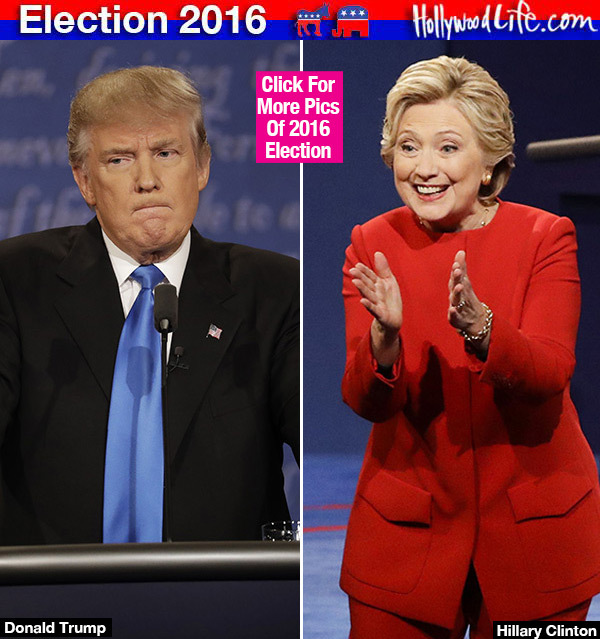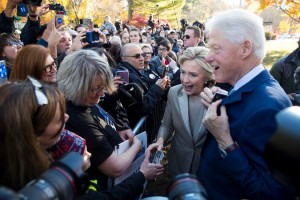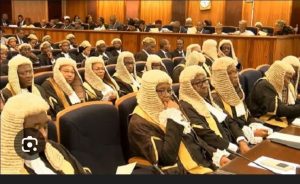Hillary Clinton or Donald Trump? A Changing Electorate Will Decide

Election Day is here at last. America is set to decide between Hillary Clinton and Donald J. Trump.
But the long, unusual and often ugly 2016 presidential campaign has been about the country’s changing demographics and the shifting coalitions of the two major parties as much as about the two main candidates.
Trump expresses confidence while criticizing the media and public polls.
As the polls opened on Tuesday morning, Mr. Trump said he would do “very well” in the crucial battleground states of Florida, North Carolina and Ohio, and acknowledged that after nearly a year and a half of campaigning the only thing left for him to do was wait and see.
“We’re going to win a lot of states,” Mr. Trump said in an early-morning interview on Fox News. “Who knows what happens ultimately?”
His voice raspy from one last after-midnight rally, Mr. Trump took some last digs at Mrs. Clinton for enlisting celebrities to bolster her crowds and he assailed the news media for trying to keep him down. A self-proclaimed lover of polls, Mr. Trump said he no longer believes most of them.
“I do think a lot of the polls are purposely wrong,” he said. “I don’t even think they interview people, I think they just put out phony numbers.”
But there is one vote that the Republican nominee knew he could count on this Election Day.
“I’ve decided to vote for Trump,” Mr. Trump said.
In a battle of the belts, it’s Sun vs. Rust.
The changing nature of the presidential map can be deduced from where Mrs. Clinton went on Monday. She was assured enough of her prospects for winning Florida, a state that George W. Bush won twice, to not return to the biggest battleground of them all, but she held her second event in four days in Michigan, a state no Republican has won since 1988.
Mrs. Clinton’s aides express confidence that the results will go their way, in large part because of their optimism about Colorado, Florida, Nevada and Virginia, but they are less bullish about their prospects in Michigan and states like Iowa and Ohio. It is a striking turnabout given how rooted Democrats once were in the heavily unionized Midwest and how much they struggled in the South and parts of the West.
But they have effectively swapped much of their working-class white base for the so-called rising demographic of millennials, nonwhite voters and suburbanites clustered near cities such as Denver, Miami, Las Vegas and Washington. From watching these communities, it will become clear on Tuesday why Mrs. Clinton’s party enjoys a structural advantage in the Electoral College. But this election may also hasten the day when more of the heartland becomes out of reach, illustrating what Democrats lost as much as what they gained. Mrs. Clinton could sweep away the gender barrier from the White House, yet her history-making potential has not received the attention that Mr. Obama’s candidacy did when he broke the presidential color line eight years ago. But that is not to say her potential to be America’s first female president, along with the boorish comments that Mr. Trump has made about women, have not captured the attention of many voters. In every battleground state, the share of women as a percentage of the overall electorate has been higher in early voting than it was in the 2012 election. Women, especially those with college degrees, have been galvanized this year. If they continue with their trend in the early vote and outperform their turnout from 2012, Mr. Trump could face a punishing defeat. Mr. Trump has one real path to the presidency: run up the score among white voters without a college degree enough to compensate for his losses among well-educated and nonwhite voters. National surveys suggest Mr. Trump is poised to fare far better among white voters without a degree than Mr. Romney did four years ago, even if the same surveys show Mrs. Clinton in the lead. He leads that group by an average of 30 points in recent national surveys, compared to Mr. Romney’s 23-point edge in 2012. If the polls and reporting are correct, Mr. Trump could make big gains in places that have been Democratic strongholds for generations, like Scranton, Pa.; Youngstown, Ohio; or Duluth, Minn. Mr. Trump excelled in these areas in the Republican primary. The Hispanic turnout will be far higher than it was in 2012: The number of Hispanics who voted early in Florida this year is about the same as the total number that voted four years ago. The same story holds in heavily Hispanic areas across the country, whether the Latino neighborhoods of Las Vegas or the Texas counties along the Rio Grande. Mrs. Clinton’s exact margin among Hispanic voters could prove just as important. She will probably win Latino voters by an even wider margin than Mr. Obama did, but polls have not always been clear on just how much she might beat Mr. Obama’s 2012 results. He won Latino voters by a margin of 71 percent to 27 percent, according to exit polls. The Latino vote has the best shot of deciding the election in Florida, where Hispanic voters represent a well-above-average share of the population. Mr. Trump does not have a credible path to the presidency without the state’s 29 electoral votes. By Jonathan Martin NYTCould it be Madam President?
What is Mr. Trump’s way forward?
The Hispanic population, a sleeping giant, is now awake.






